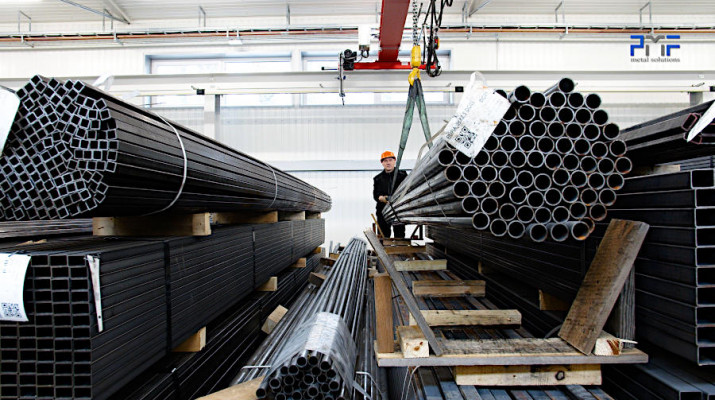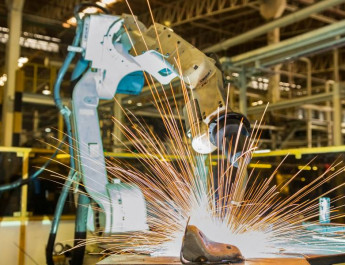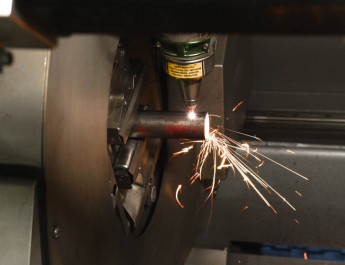Metalworking has evolved significantly over the years, transforming from traditional manual techniques to highly sophisticated and automated processes. In the modern era, technological advancements have revolutionized the metalworking industry, enhancing precision, efficiency, and overall productivity. In this article, we will explore some key aspects of contemporary metalworking, with a focus on robotic welding, laser cutting of sheet metal, laser cutting of pipes and profiles, and the bending of sheet metal using CNC bending machines.
Robotic Welding: Precision in Fusion
Robotic welding has emerged as a game-changer in the field of metal fabrication. This automated process utilizes industrial robots to perform welding tasks with unparalleled precision and speed. The advantages of robotic welding include consistent quality, increased productivity, and the ability to handle complex welding patterns.
Benefits of Robotic Welding:
- Precision and Consistency: Robots follow programmed instructions precisely, ensuring consistent weld quality across a large volume of workpieces.
- High Speed: Robots can execute welding tasks at a faster rate than manual welding, leading to increased production efficiency.
- Safety: By automating the welding process, human workers are exposed to fewer risks associated with welding, such as fumes and intense heat.
- Cost-Effectiveness: While the initial investment in robotic welding systems can be significant, the long-term cost benefits in terms of increased efficiency and reduced errors make it a cost-effective solution.
Challenges in Robotic Welding:
- Programming Complexity: Creating accurate and efficient robot welding programs requires skilled technicians who can understand the intricacies of the welding process.
- Initial Investment: The upfront cost of acquiring and implementing robotic welding systems can be a barrier for small and medium-sized enterprises.
- Maintenance: Regular maintenance and updates are crucial to ensure the continued smooth operation of robotic welding systems.
Laser Cutting of Sheet Metal: Precision at the Speed of Light
Laser cutting has become a widely adopted technique in metalworking, offering exceptional precision and speed. The process involves using a high-powered laser to melt, burn, or vaporize material, resulting in clean, precise cuts. Laser cutting is particularly advantageous for sheet metal fabrication due to its ability to create intricate designs and complex shapes with minimal material waste.
Advantages of Laser Cutting:
- Precision: Laser cutting provides high levels of accuracy, allowing for intricate designs and tight tolerances.
- Speed: The laser cutting process is rapid, significantly reducing the time required to cut complex shapes compared to traditional methods.
- Versatility: Laser cutting can be applied to a variety of materials, including metals, plastics, and composites, making it a versatile solution for different industries.
- Minimal Material Waste: The precision of laser cutting minimizes material waste, contributing to cost savings and environmental sustainability.
Applications of Laser Cutting in Sheet Metal:
- Prototyping: Laser cutting is ideal for creating prototypes and small batches of sheet metal components with precision and speed.
- Automotive Industry: Laser-cut sheet metal parts are widely used in the automotive industry for components such as chassis, brackets, and decorative elements.
- Aerospace: The aerospace sector leverages laser cutting for manufacturing lightweight and intricate components essential for aircraft and spacecraft.
Laser Cutting of Pipes and Profiles: Extending Precision to Three Dimensions
While laser cutting is commonly associated with sheet metal, advancements in technology have enabled the application of laser cutting to pipes and profiles. This three-dimensional approach opens up new possibilities for creating complex structures and enhancing efficiency in various industries.
Three-Dimensional Laser Cutting Advantages:
- Versatility: Laser cutting machines can be equipped with rotary devices to cut pipes and profiles accurately, allowing for the creation of intricate geometries.
- Time Efficiency: The simultaneous cutting of multiple faces of a pipe or profile reduces production time compared to traditional methods.
- Consistency: Three-dimensional laser cutting ensures consistent quality across all dimensions of the workpiece, contributing to overall product reliability.
- Reduced Post-Processing: The precision of three-dimensional laser cutting often eliminates the need for extensive post-processing, saving time and resources.
Applications in Three-Dimensional Laser Cutting:
- Architectural Components: Three-dimensional laser cutting is employed to create intricate architectural components, enhancing the aesthetic appeal of buildings.
- Oil and Gas Industry: Pipes and profiles used in the oil and gas sector require precise cutting for optimal performance, making three-dimensional laser cutting a valuable tool in this industry.
- Custom Fabrication: Industries requiring custom components, such as furniture manufacturing and artistic installations, benefit from the versatility of three-dimensional laser cutting.
Bending of Sheet Metal Using CNC Bending Machines: Precision in Forming
Bending is a critical step in sheet metal fabrication, shaping flat sheets into three-dimensional structures. Computer Numerical Control (CNC) bending machines have revolutionized this process, offering unparalleled precision, repeatability, and efficiency.
Advantages of CNC Bending:
- Precision and Accuracy: CNC bending machines use computer-controlled algorithms to ensure precise and accurate bending of sheet metal according to predefined designs.
- Versatility: CNC bending machines can handle a variety of sheet metal thicknesses and materials, providing flexibility in design and application.
- Efficiency: The automated nature of CNC bending reduces the time required for each bending operation, contributing to overall production efficiency.
- Reduced Waste: CNC bending minimizes material waste by precisely forming the sheet metal into the desired shapes with minimal trial and error.
Applications of CNC Bending Machines:
- Electronics Industry: The production of electronic enclosures and components often involves intricate sheet metal bending, a task efficiently performed by CNC bending machines.
- Appliance Manufacturing: CNC bending is widely used in the production of appliances, forming components like panels and housing with high precision.
- Medical Equipment: The healthcare industry relies on CNC bending for the production of precise and customized components used in medical equipment and devices.
Embracing the Future of Metalworking
As we delve into the intricate world of modern metalworking, it becomes evident that technological advancements are reshaping the industry. Robotic welding, laser cutting of sheet metal and pipes, and CNC bending machines are at the forefront of this transformation, offering increased precision, efficiency, and versatility.
While these technologies bring numerous benefits, it’s essential for manufacturers to invest in training their workforce to operate and maintain these advanced systems. Additionally, ongoing research and development will continue to push the boundaries of what is possible in the realm of metalworking, ensuring that the industry remains at the forefront of innovation.
In conclusion, the marriage of technology and metalworking is a harmonious partnership that propels the industry into a future where precision and efficiency are paramount. As we witness the continued evolution of these technologies, one can only anticipate further breakthroughs that will redefine the possibilities and applications of metalworking in the years to come.




